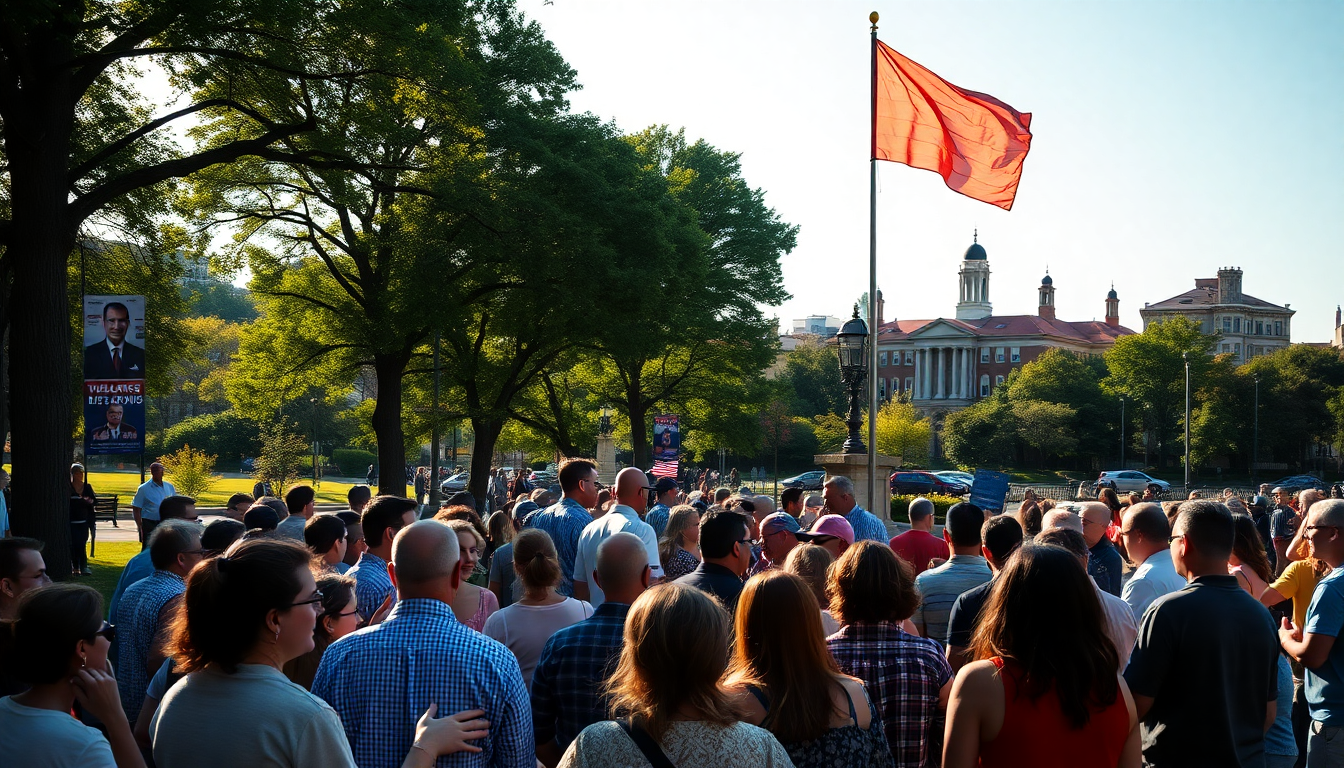Table of Contents
The political landscape of Staten Island is buzzing with change as Democratic leaders in the borough rally behind **Zohran Mamdani**, the party’s nominee. This shift comes on the heels of a heated primary where some party members had initially thrown their support behind former Governor **Andrew Cuomo**.
So, what does this alliance mean for the upcoming general election? Let’s dive into the implications of these shifting dynamics.
Shifting Allegiances in Staten Island’s Political Arena
After the primary elections, Staten Island Democrats are finding common ground with Mamdani, even though they were previously backing Cuomo.
Laura LoBianco Sword, the borough’s Democratic chairwoman, underscored the importance of unity, stating, “Zohran is the Democratic nominee. The voters have spoken.” This strategic pivot is all about consolidating support as the party gears up for the general election.
As Mamdani prepares for a major campaign launch on **August 17**, he’s setting his sights on winning over voters across all five boroughs. His strategy? Highlighting his progressive platform while contrasting it with Cuomo’s tarnished reputation, which has been marred by scandals.
Campaign spokeswoman **Dora Pekec** captured this sentiment perfectly when she said, “While Zohran builds real support, Cuomo’s campaign is withering.” This narrative positions Mamdani as a fresh voice for change in a borough that has often leaned conservative.
Despite being seen as an outsider, Mamdani’s victory in the primary has sparked enthusiasm among the local Democratic base.
Prominent party figures, including **Rodneyse Bichotte** from Brooklyn, have thrown their support behind him, signaling a willingness to put aside past disagreements for a common goal. This newfound solidarity is crucial as they work to engage voters who may have previously supported Cuomo.
Challenges and Opportunities Ahead for Mamdani
As Mamdani gears up for the general election, he’s facing a multifaceted challenge. He’s not only up against Republican **Curtis Sliwa**, but he also has to contend with Cuomo, who is now running as an independent. Each opponent presents unique hurdles that Mamdani will need to navigate to secure a win.
Mamdani’s campaign is marked by ambitious proposals, like addressing the city’s food deserts through government-run grocery stores. While this initiative is controversial, it strikes a chord with constituents who are aware of the pressing issues in their neighborhoods. LoBianco Sword’s acknowledgment of these food deserts highlights the importance of addressing local needs in Mamdani’s strategy.
Additionally, Mamdani’s plan to raise taxes on millionaires and corporations to fund public services has sparked both support and criticism. Advocates argue this is a necessary step toward equity, but opponents warn it could alienate moderate voters. **Michael Tannousis**, chairman of the Staten Island Republican Party, has already labeled the Democratic alliance with Mamdani as a “shotgun wedding,” predicting that many traditional Democrats may lean toward Sliwa, especially given his strong past performances.
The Electoral Landscape: Predictions and Strategies
As the election day draws closer, the stakes are sky-high for both Mamdani and Sliwa. Political analysts point out that Sliwa’s strong track record in Staten Island, where he secured **65% of the vote** against Mayor Adams in 2021, makes him a formidable adversary. His campaign is honing in on dissatisfaction with the current administration, especially regarding policies affecting local residents, such as the handling of migrant shelters.
For Mamdani, the key to victory lies in effectively communicating his vision and addressing the concerns of Staten Island voters. His ability to connect with constituents—especially those feeling disillusioned with traditional political approaches—will be critical. The narrative of Mamdani as a representative of change could resonate with voters looking for alternatives to the status quo.
As the political landscape continues to evolve, both candidates will need to adapt their strategies to meet the demands of a diverse electorate. The coming weeks will be pivotal in shaping the outcome of this election, and how each candidate positions themselves could determine their success. Are you ready to see how this all unfolds?





